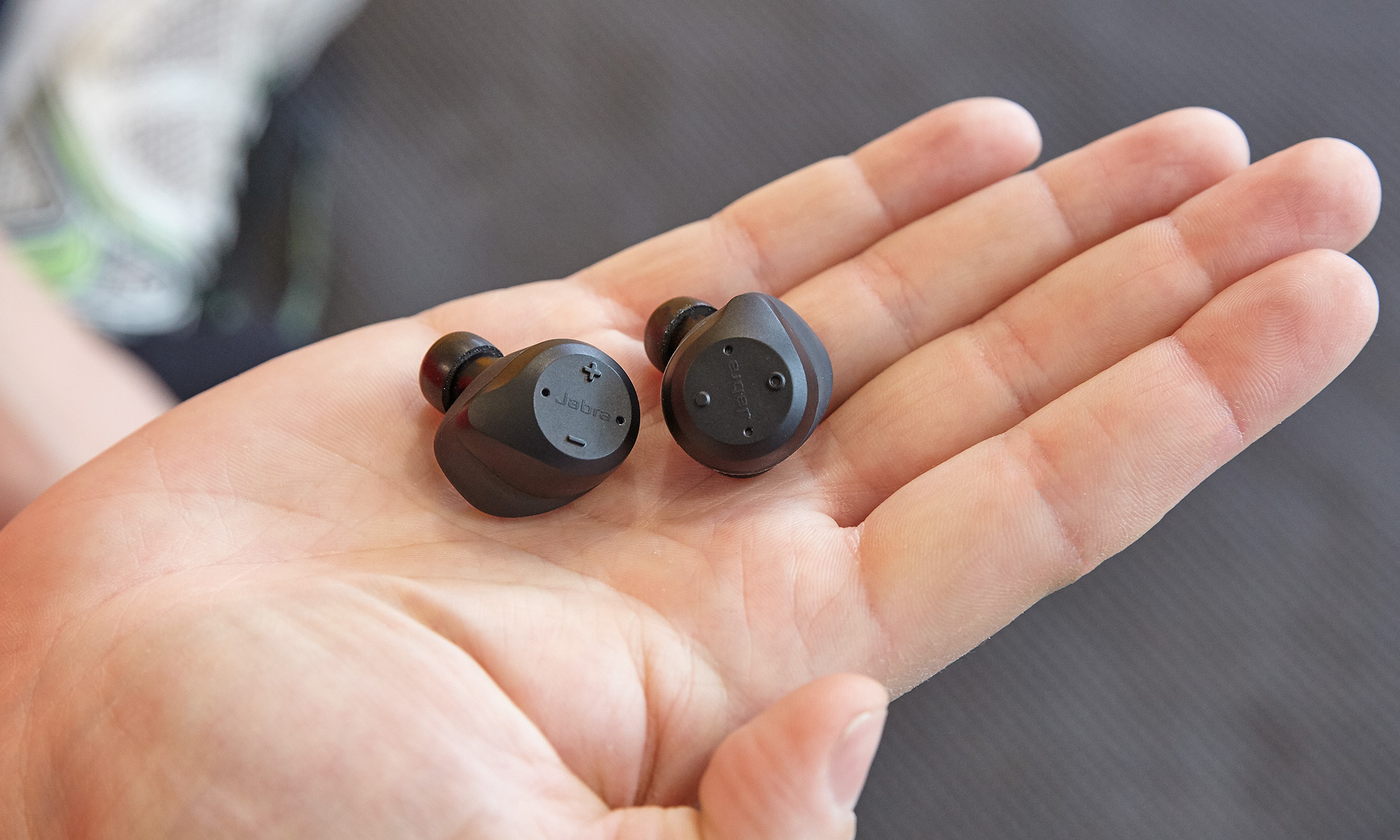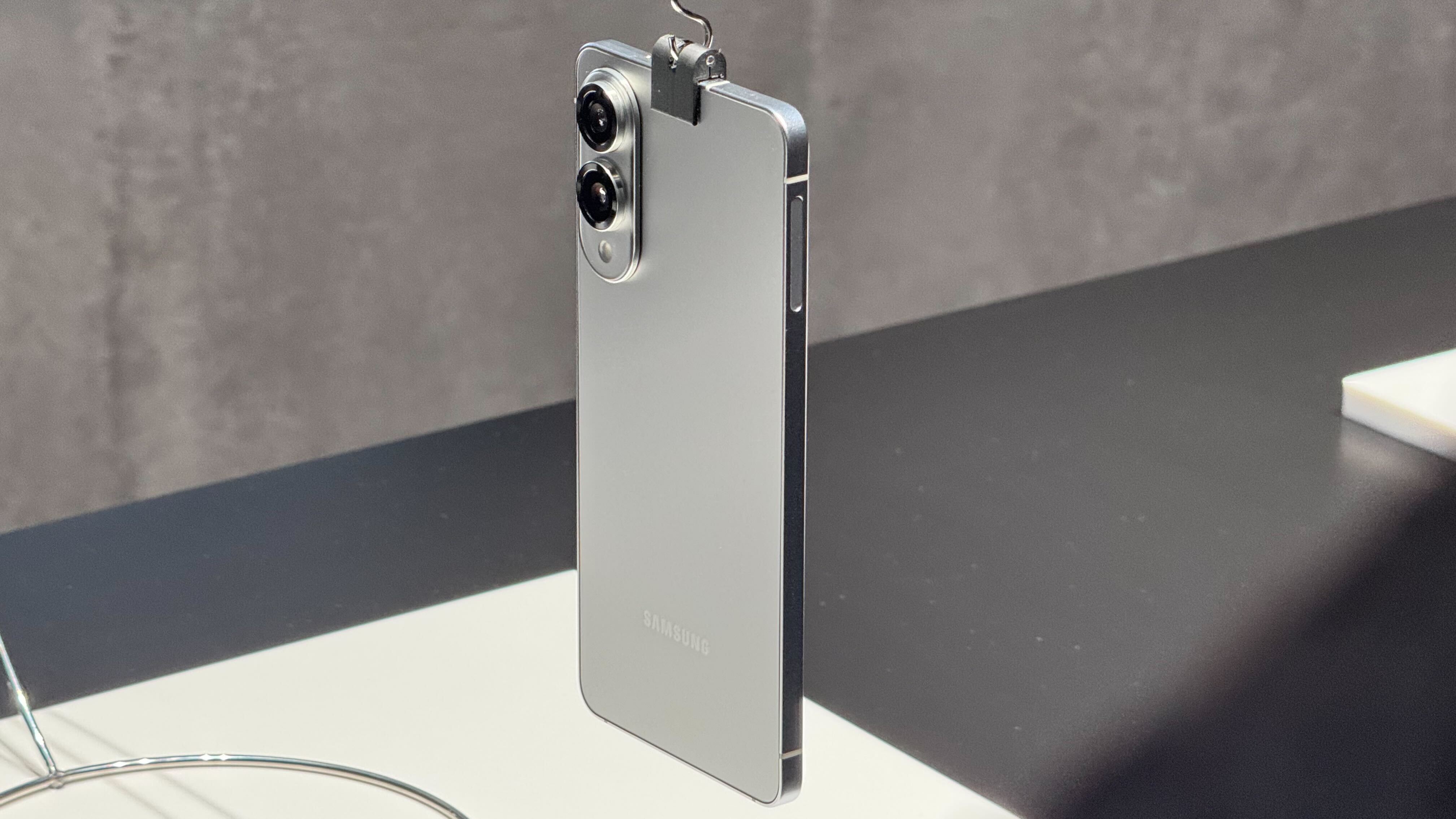Tom's Guide Verdict
The Jabra Elite Sport earbuds pack in a ton of features, but inaccurate heart-rate readings and poor ergonomics mar the experience.
Pros
- +
Maintains a strong Bluetooth connection
- +
Good audio quality
- +
Guided cross-training workouts
- +
Lots of ear sizing options
Cons
- -
Bland, chunky design
- -
Buttons are hard to press
- -
Syncs only with Strava
- -
Inaccurate heart-rate monitor
Why you can trust Tom's Guide
The age of truly wireless earbuds is here. While Apple’s AirPods have received the most attention, there are now at least half a dozen of these cord-free earbuds, with more to come. Jabra’s entry, the Elite Sport, adds a fitness element: They have an optical heart-rate monitor and connect to an app that can coach you through a variety of workouts.
At $249, however, they’re $100 more than Samsung’s Gear IconX, which can do many of the same things. Furthermore, Jabra’s earphones don’t perform as well as promised.
Design: Conspicuously Inconspicuous
Jabra’s Elite Sport earbuds stand out for their plainness. The buds are nondescript, black blobs that are remarkable for their lack of styling. I get that they’re supposed to blend in — that is, as much as large, black nubs in your ears can blend in — but a little pizzazz wouldn’t have hurt.
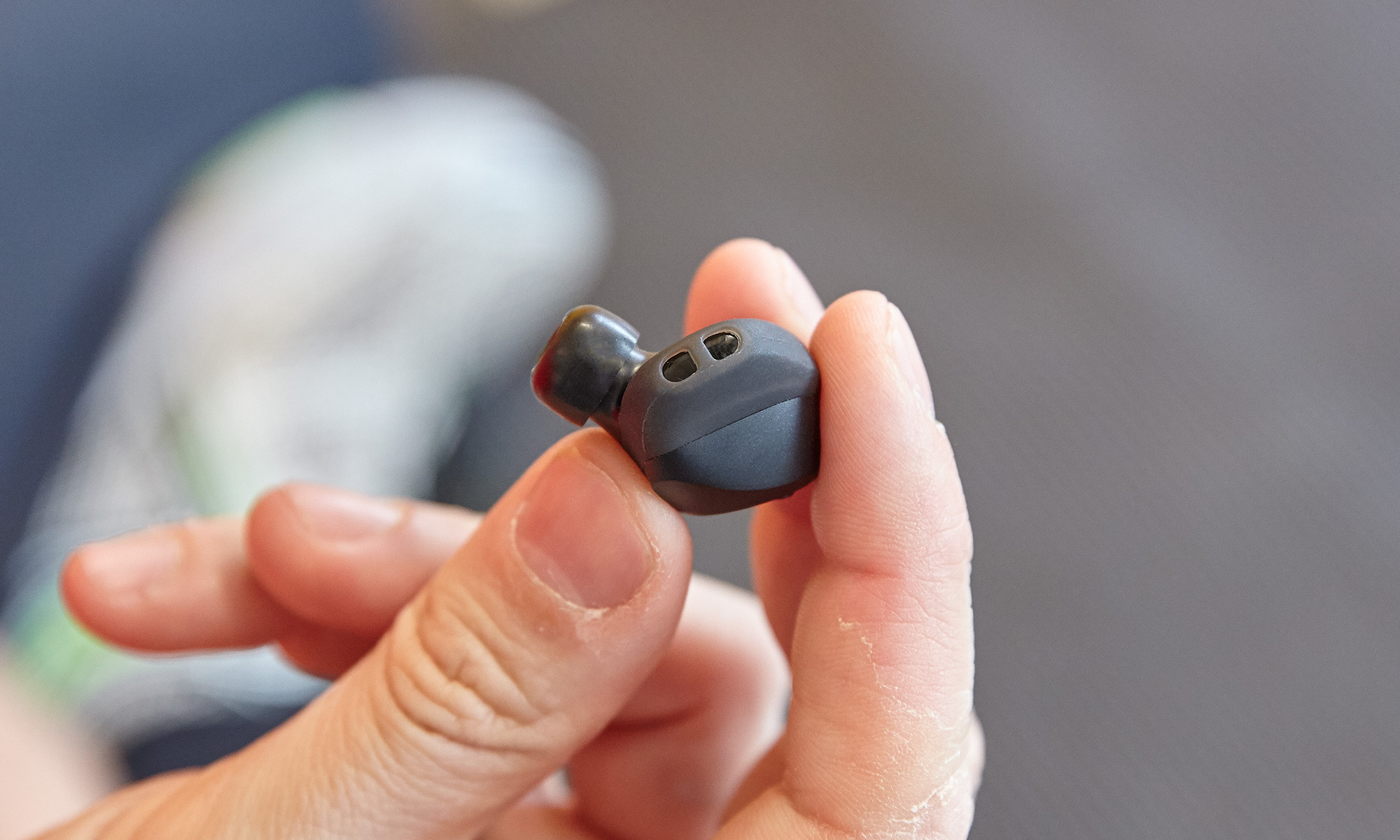
The earbuds protrude a bit from your ear — about the same as Bragi’s The Headphone but more so than the Samsung Gear IconX. At least they don’t have a dangling white section as the Apple AirPods do. The bottom of the right earbud also has a small optical heart-rate sensor, similar to the one on the Gear IconX.
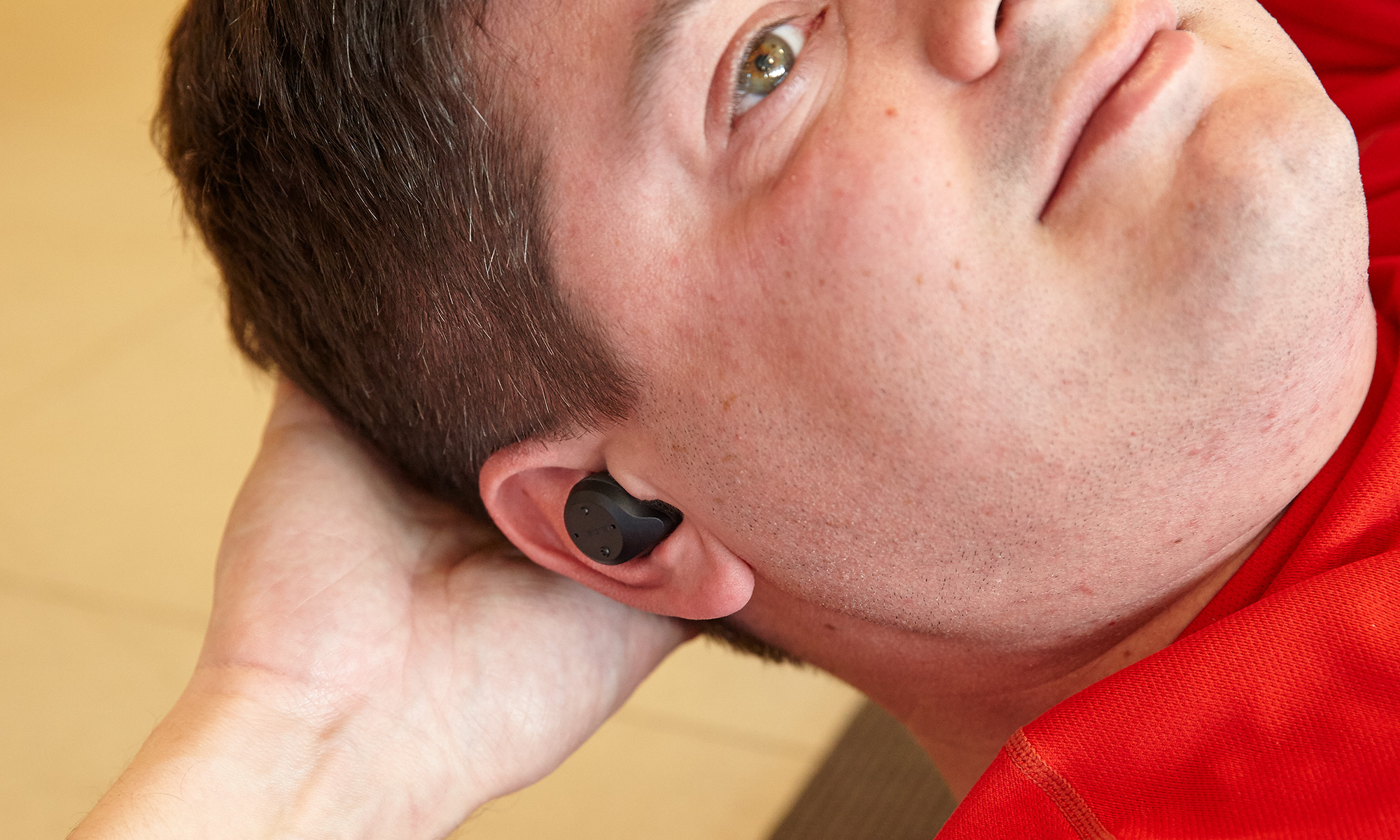
With the earbuds, Jabra includes six sets of tips and three sets of wings, the latter of which are designed to hold the earbuds in place as you run. None of the tips are attached to the earbuds when you first open the box, because Jabra wants to ensure that you pick the right-size tips.
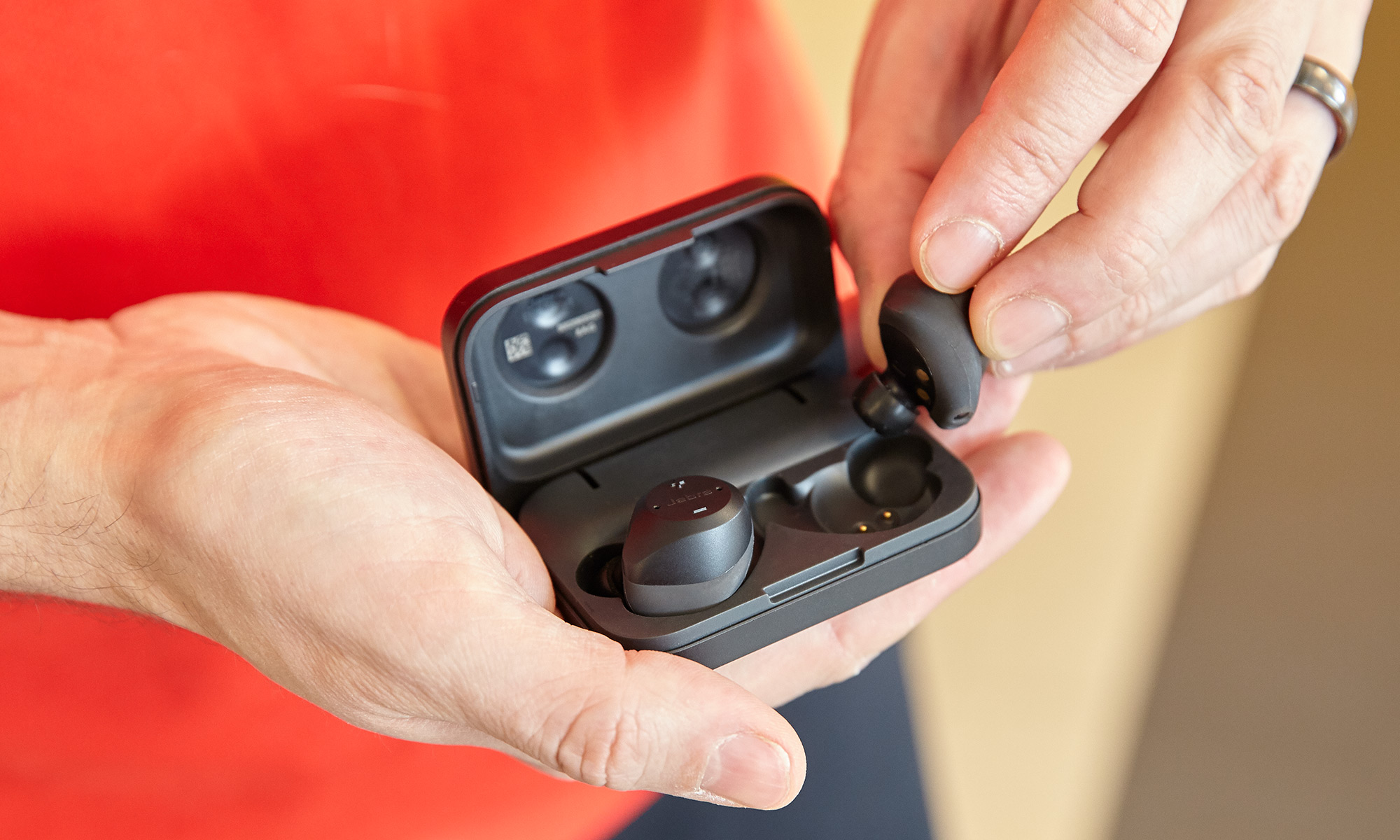
The earbuds come with a case, about the size of a small jewelry box, that not only protects the buds but also has a small battery that recharges them. Like the earbuds, the small, black case lacks any sort of styling. It’s so symmetrical, and has so few visual cues, that I often tried to open the wrong end.
The earbuds are waterproof and have a three-year warranty for damage from sweat, which is reassuring for runners like me.
Exercise Performance
Unlike the Gear IconX earbuds, which have accelerometers (and a music player) built right into the earbuds, the Jabra buds require you to bring your phone with you as you work out. You gain more features, such as training programs, but you lose the mobility of going phone-free on your runs — one of my favorite features of the IconX.
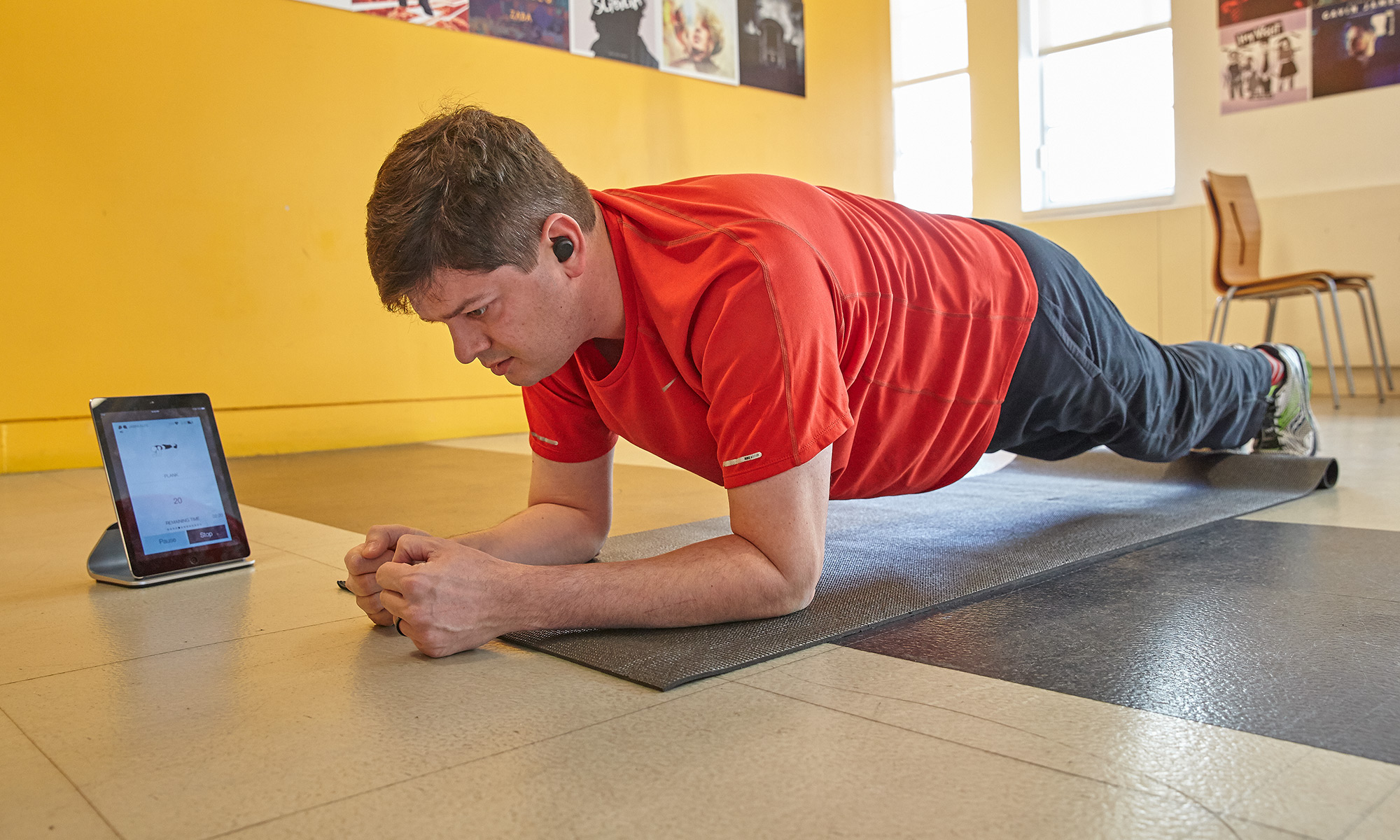
Through several runs, the Elite Sport remained securely in my ear, and its Bluetooth connection to my iPhone 6s (which was on my left arm) never
You have to push hard on the Jabra’s buttons to get them to work, which caused the buds to really jam into my ears.
During less-intense activities, the Elite Sport buds maintained a steady connection to my iPhone (in my pants pocket) as I walked around. Whereas the Motorola Verve Ones+ constantly cut out, the Elite Sport let me listen to music and podcasts without interruption.
Physical buttons on the left and right earbuds let you control the volume, music and several other functions, but I tried to use them as little as possible. You have to push hard on the buttons to get them to work, which caused the buds to really jam into my ears. Although they can be finicky, I prefer the style of touch controls on the Samsung Gear IconX. I’ll choose slightly erratic performance over physical discomfort any day.
As you run, the Elite Sport will tell you, at regular intervals, your pace, heart rate, training zone and more. You can customize what the buds tell you and when, in Jabra’s app. There’s a multitude of stats to choose from, including distance, duration, split times, speed, cadence and even workout guidance.
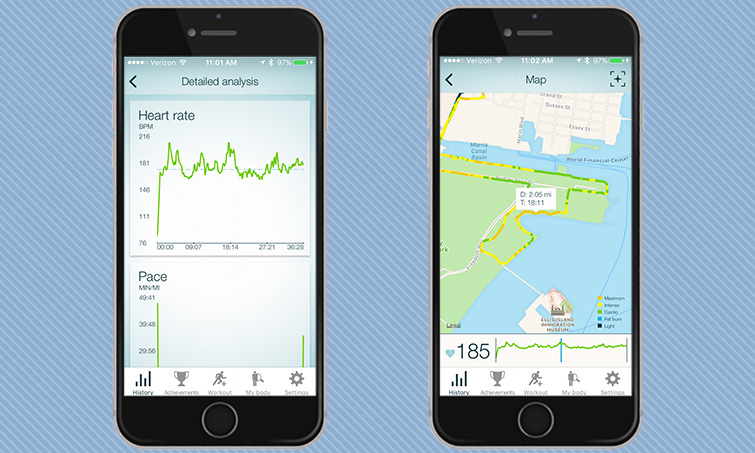
Although my distance and pace were recorded accurately (this data was gathered from my iPhone), the heart-rate tracking was not only inaccurate, but erratic.
On my first two runs using the Jabra Elite Sport, the earbuds recorded my max heart rate at 208 beats per minute, with an average of 172 bpm. In comparison, the Garmin Forerunner 235, whose wrist-based heart-rate monitor I’ve found to be accurate, said my max heart rate was 184 and my average was 165.
Even without the Garmin to verify my findings, if my heart was pumping at 208 bpm, then I’d be in serious trouble. The chart on Jabra’s app showed how my heart rate jumped all over the place. By comparison, the same chart, as recorded with the Garmin, shows much less variation.
On a third run, the Jabra reported a max heart rate of 187 bpm and an average heart rate of 168 bpm. That was more in line with what the Garmin Forerunner recorded (179 bpm max, 166 bpm average) but still higher than what’s typical for me.
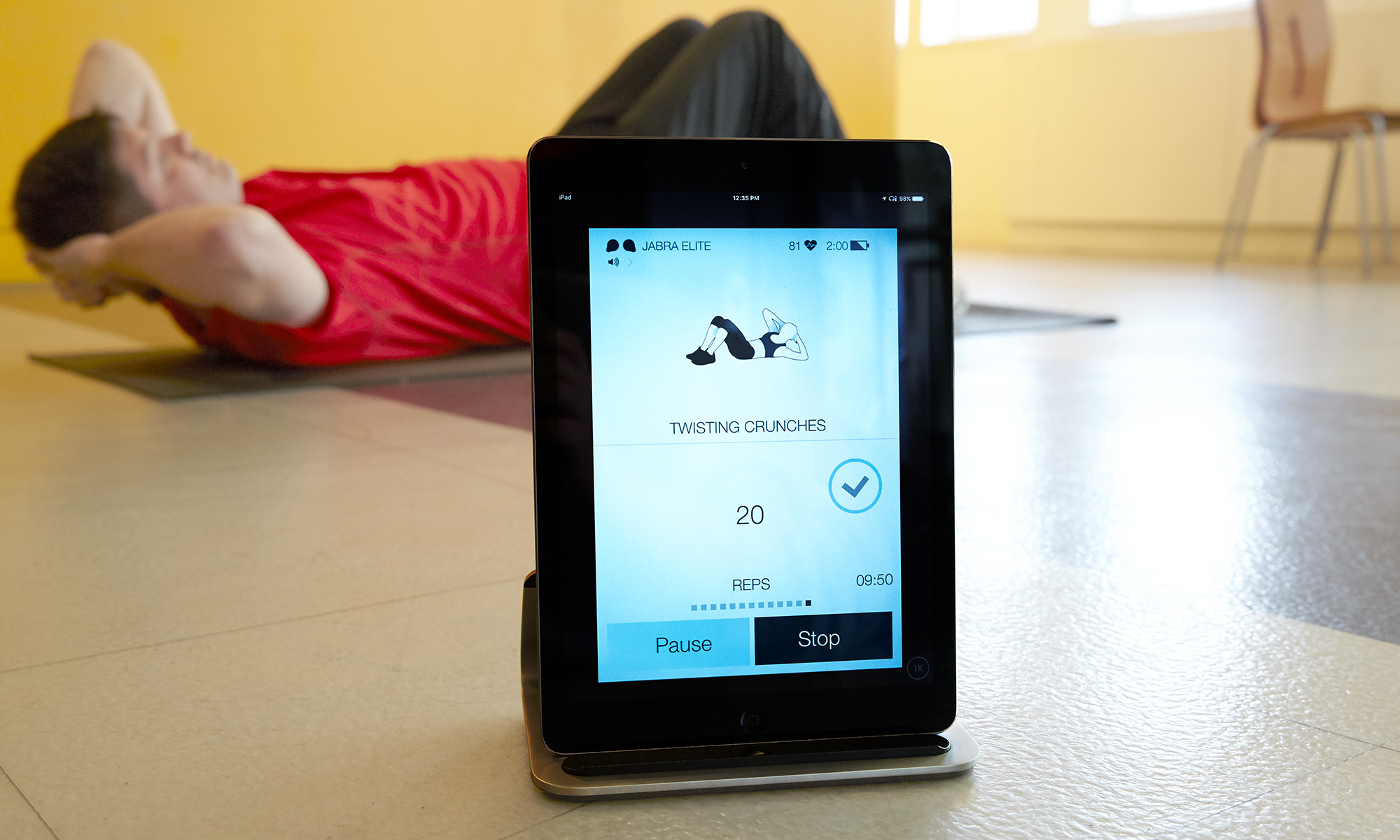
In addition to its running-focused features, the Jabra app has a cross-training program, which is great for runners who need to work on other aspects on the days they’re not pounding the pavement. Cleverly, accelerometers in the earbuds themselves make sure you’re actually doing the workout. I rued the fact that they wouldn’t let me cheat on my sit-ups, but that’s probably for the best.
Jabra Sport App
In Jabra’s fitness-focused Sport app, you create a profile where you input your height, weight and age. The top section of the app has some handy icons that show, at a glance, whether both earbuds are in, your heart rate and battery life remaining.
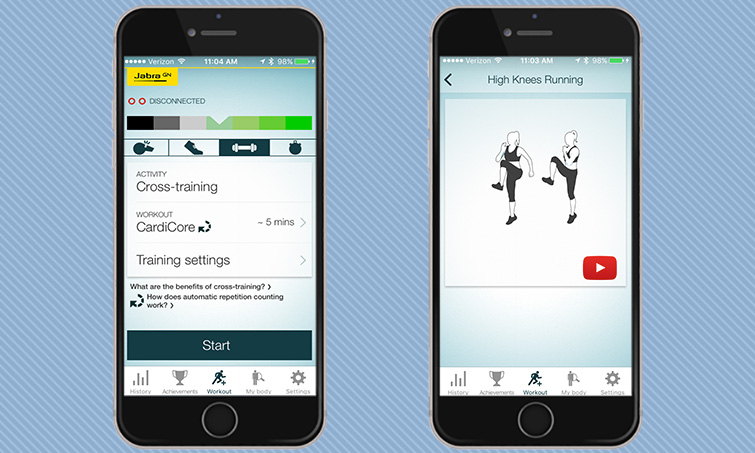
Through the app, you can track a handful of activities. In addition to running and walking, you get spinning, cycling, skiing and skating, to name a few. There’s also a cross-training section with a number of exercises, most of which are between 6 and 15 minutes. Each exercise also has a small video to show the correct way to perform it, which is very handy. You can also create your own cross-training regimen and select from the more than 50 exercises, from arm curls to windmills.
In addition, a VO2 max test, which calculates how efficient you are at processing oxygen, also lets you determine your overall fitness level. This test, which previously was limited to much more expensive devices, is now making its way into consumer trackers, such as the Garmin Forerunner 235 and the Fitbit Charge 2.
Though I generally liked Jabra’s app, there are a few big limitations. For one, you can sync your data only with Strava, which is a good fitness app, but it’s not as popular as MapMyRun, for example. You can, however, manually export your data as a CSV file if you want to manually upload it to another fitness app.
Also, there’s no way to sync your settings and data from the Jabra app — such as completed and custom workouts — in the cloud, so if you were to switch phones, you would lose everything.
One minor point: I wish the Sport app had the ability to adjust the audio properties of the Elite Sport, as you can with other Jabra headphones.
Audio Performance
Unlike on the IconX, you can’t store music on the Elite Sport earbuds themselves. Rather, you have to stream music from a connected Bluetooth device. That’s a bit of a downer. One of the things I really like about the IconX is the ability to leave my phone behind when I go for a run and still track not only my heart rate and distance, but also listen to tunes.
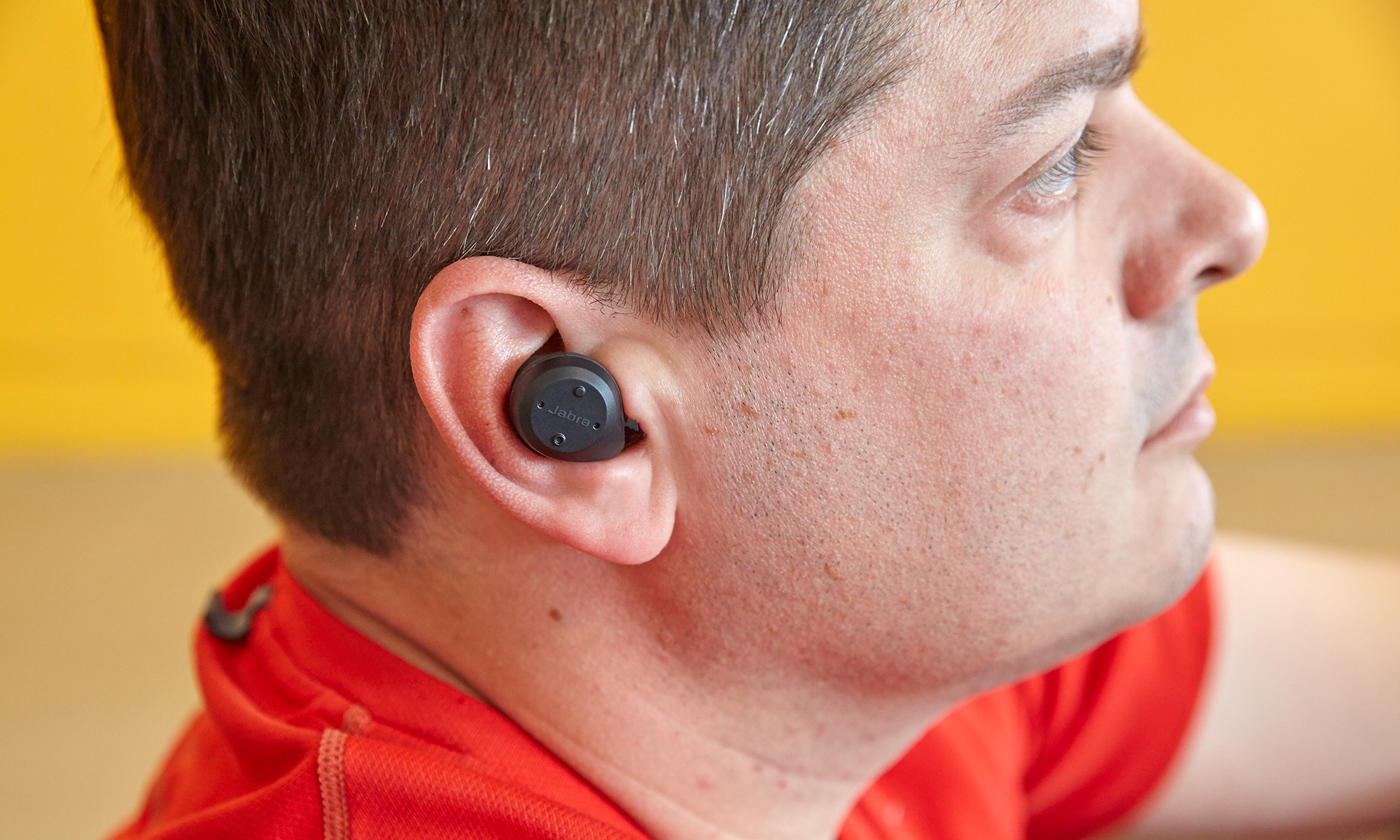
Putting that aside, the Elite Sport delivered excellent audio that was full, yet balanced. The bass line in Michael Jackson’s “Billy Jean” was driving, yet clear, and didn’t overwhelm the vocals. I found the same went for other genres of music, ranging from classical to classic rock.
Unfortunately, I couldn’t select my running playlist from within Jabra’s app; I had to cycle through my entire music library (by pressing a button on the earbud) to find my favorite running songs.
Other Features
A double-press on the bottom button on the right triggers Hear Through mode, which pipes in ambient sounds so you can be more aware of your surroundings. It works but makes everything around you sound tinny. Long-pressing the same button will activate Siri, but it also will turn on Hear Through temporarily.
When a call comes in, the Jabra lets you say “Answer” to accept a call, which is a pretty clever feature. A caller could hear me clearly, and I could hear her, even with a slight wind blowing.
Battery Life
The Elite Sport earbuds hold a 3-hour charge, with 2 more hours stored in the case. That’s on a par with the IconX, which will last 1.5 to 2 hours with workout features and Bluetooth on, and 3 to 4 hours of music-listening time stored on the headphones.
The Bragi buds, which don’t have a heart-rate monitor or other workout features, lasted nearly 6 hours on a charge. However, unlike Apple, Samsung and Jabra, their case lacks a battery to recharge the buds.
After a 45-minute run, the battery life had dropped from 3 hours to 2 hours and 30 minutes. Not too shabby for their size.
Bottom Line
Jabra packed plenty of features into its Elite Sport earbuds, but they’re not upper-echelon. They deliver great sound, and their Bluetooth connection is steady and strong.
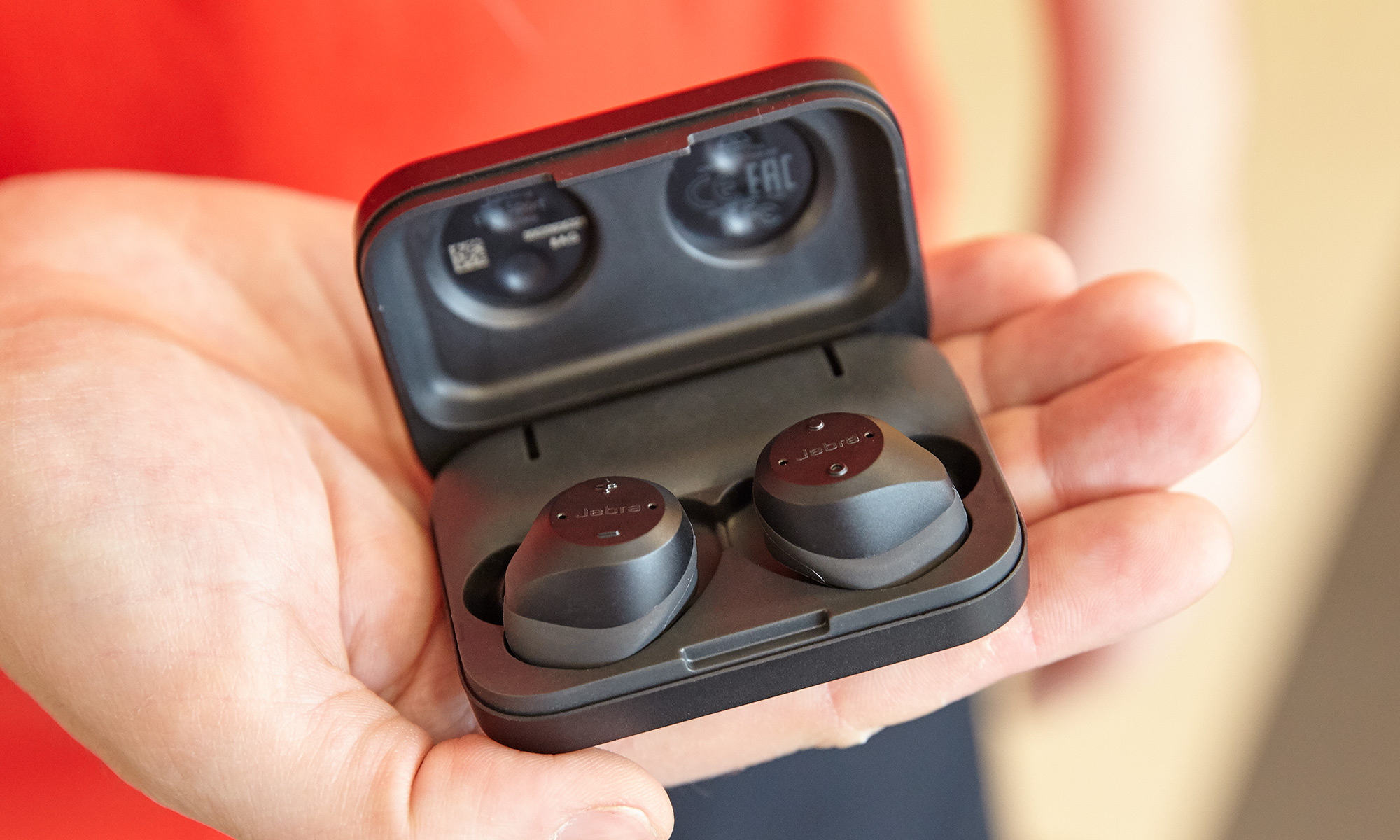
But while I like that Jabra’s app offers a comprehensive training regimen for runners and cyclists, it was a letdown that you can sync it only with Strava, and the music controls were disappointing as well. One of the biggest reasons to get the Elite Sport — the heart rate monitor — is also the earbuds’ biggest weakness; it delivers inaccurate and erratic results.
If you want wireless earbuds for your workouts — and you have an Android phone — consider the Samsung Gear IconX earbuds, which deliver equally robust sound, a more accurate heart-rate monitor and built-in storage for music.
Runners who want to listen to tunes and measure their heart rate would be better served by the TomTom Spark 3 Cardio + Music GPS watch, which comes with its own Bluetooth headset. You’ll lose some features, such as cross-training, but you’ll get a more accurate heart-rate monitor and better music controls, and you’ll be able to leave your phone at home.
On paper, the Jabra Elite Sport earbuds have a lot of potential, but they have too many issues for us to recommend them.
Photo credit: Jeremy Lips/Tom's Guide

Michael A. Prospero is the U.S. Editor-in-Chief for Tom’s Guide. He oversees all evergreen content and oversees the Homes, Smart Home, and Fitness/Wearables categories for the site. In his spare time, he also tests out the latest drones, electric scooters, and smart home gadgets, such as video doorbells. Before his tenure at Tom's Guide, he was the Reviews Editor for Laptop Magazine, a reporter at Fast Company, the Times of Trenton, and, many eons back, an intern at George magazine. He received his undergraduate degree from Boston College, where he worked on the campus newspaper The Heights, and then attended the Columbia University school of Journalism. When he’s not testing out the latest running watch, electric scooter, or skiing or training for a marathon, he’s probably using the latest sous vide machine, smoker, or pizza oven, to the delight — or chagrin — of his family.
